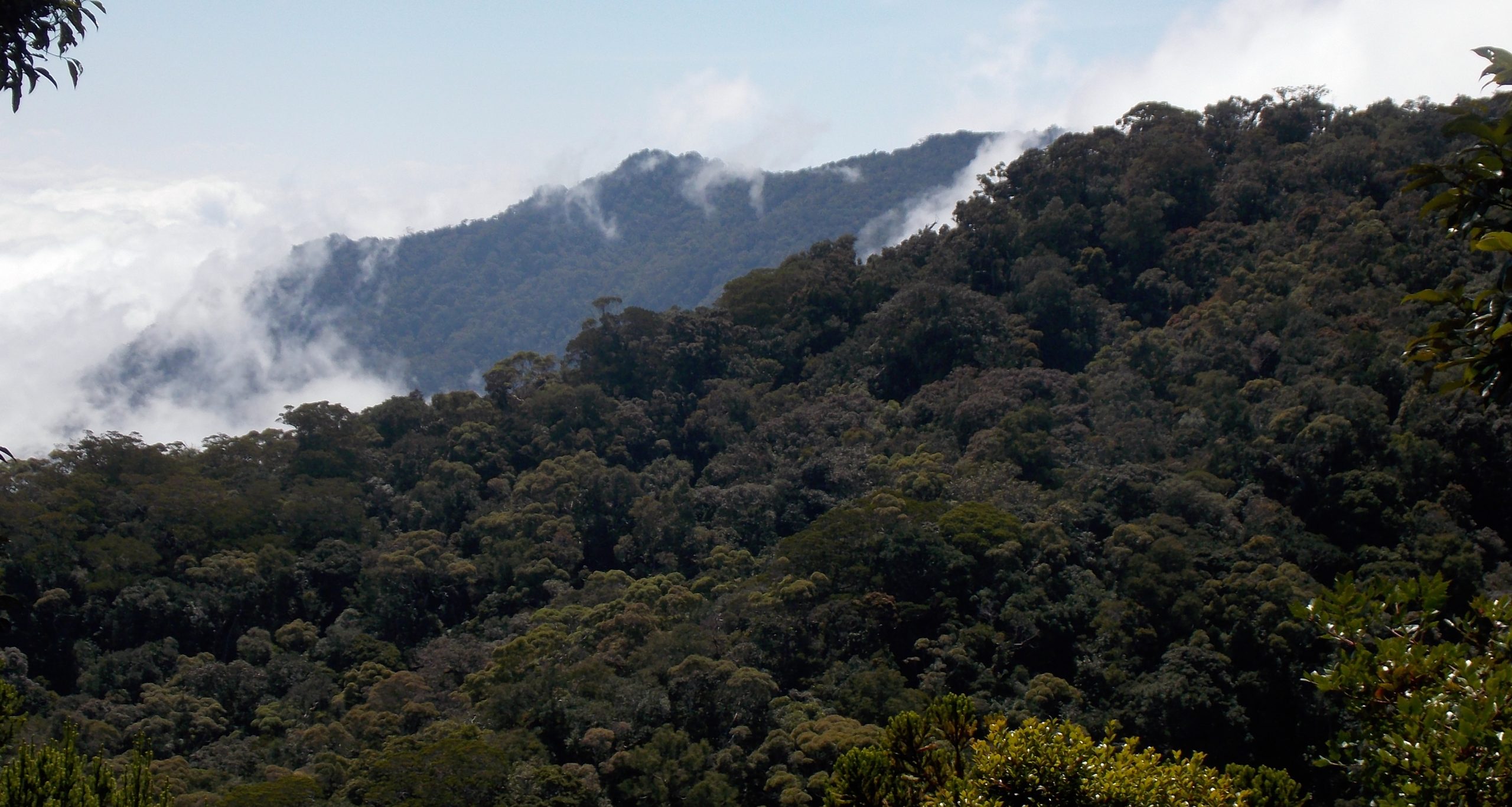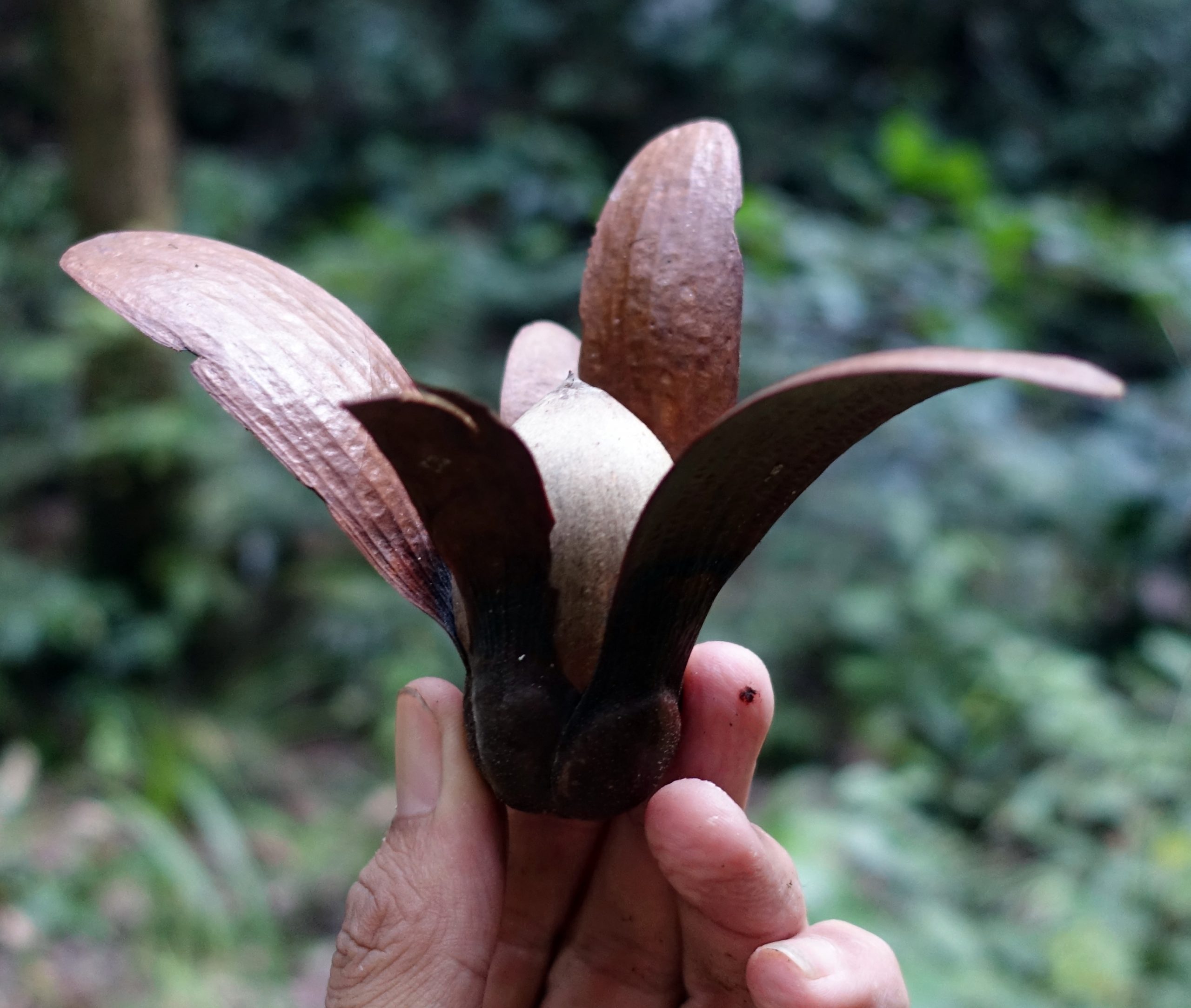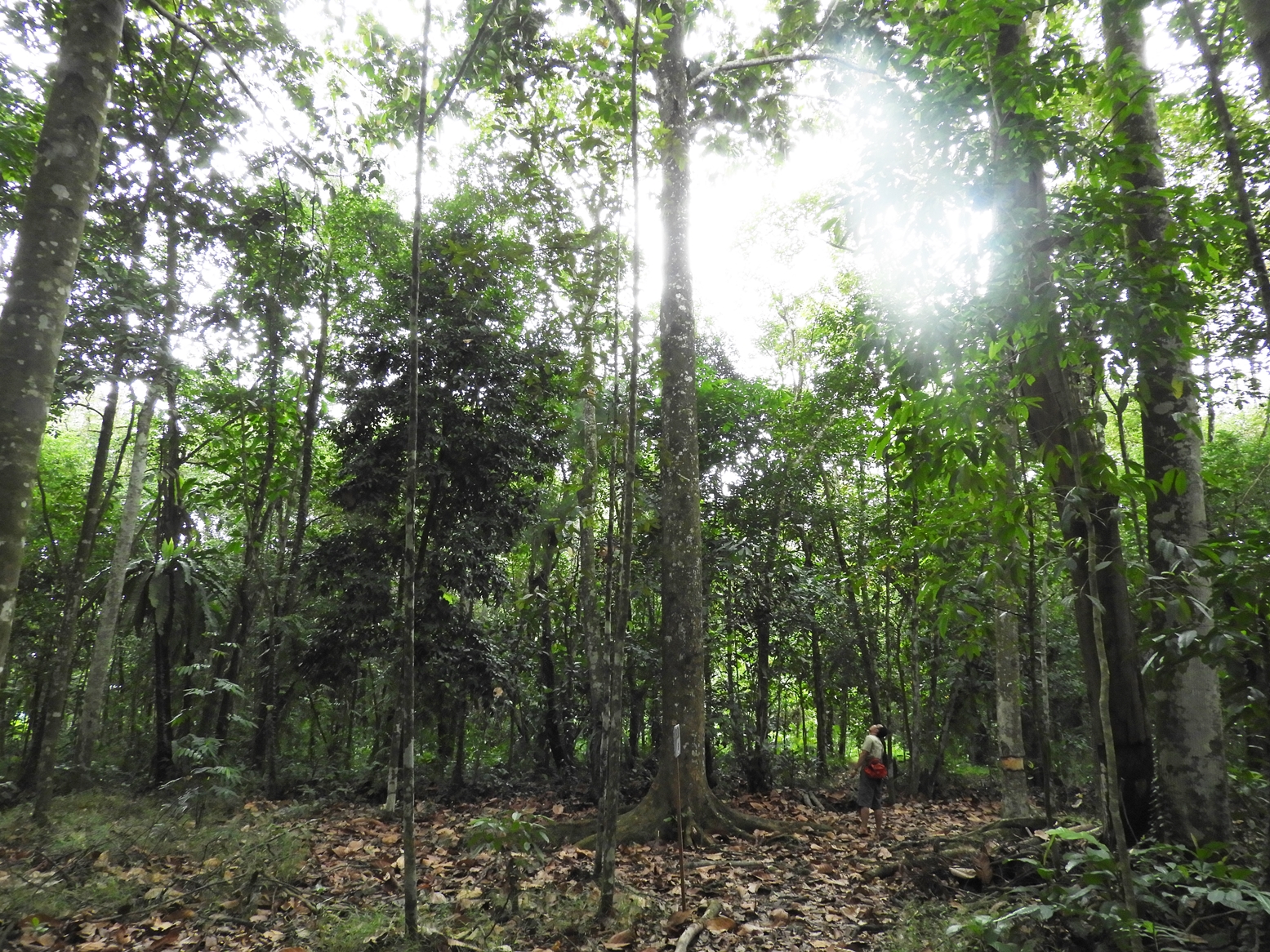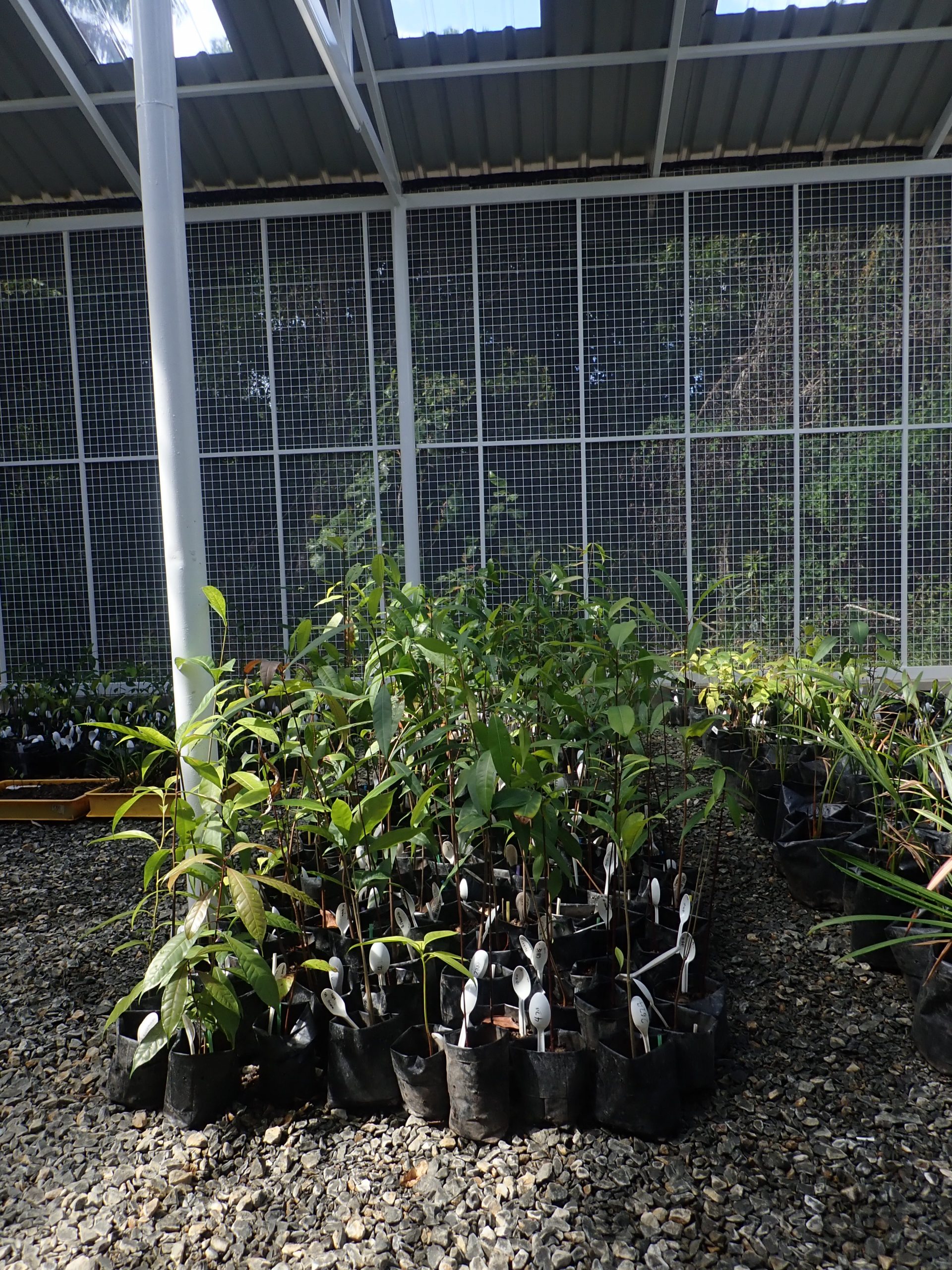Dipterocarps: 62% of Bornean giant tree family threatened in the wild
-
Region
Asia -
Programme
Global Conservation Consortia -
Topic
Conservation Prioritisation -
Type
Press Release -
Source
BGCI
Today, BGCI releases the Red List of Bornean Endemic Dipterocarps which documents the conservation status of all 162 species of dipterocarp tree endemic to Borneo. It finds that 62% or 99 species are at risk of extinction in the wild, with the major threats being conversion of lowland forest to agro-industrial plantations and logging.
Borneo is a diversity hotspot for trees within the family of Dipterocarpaceae. It is home to 267 species of this family, 162 of which are endemic to the island and found nowhere else in the world. On Borneo and across other parts of Southeast Asia, dipterocarp species are dominant in lowland habitats providing the forest home to many flora and fauna including globally threatened orangutan species. The dominance of the species makes them of biological and botanical interest as this is rarely seen in tree families.

As well as being ecologically significant these trees are economically valuable. They are large trees which produce timber in varying colours, strengths and sizes. They are the main source of timber from Borneo and used to produce decking, for construction and other purposes. Dipterocarps are iconic in the rainforest, producing beautiful yellow and white flowers during mast flower events and typically have a winged fruit. They are culturally important, conferring medicinal and food value to local communities. Therefore, dipterocarps need our attention and conservation.
Of the 162 dipterocarps, 99 are threatened in the wild including 18 species assessed at Critically Endangered. There are 47 species assessed as Vulnerable compared to only 27 species assessed as Least Concern. A concerted effort is needed to protect the most threatened dipterocarps in the wild.

Much of the loss of Bornean dipterocarp forest is caused by the expansion of agro-industrial plantations across the island for oil palm and pulp, therefore greater support and investment in sustainable palm oil is needed. As well as the loss of trees, land use change puts remaining forests at greater risk of fire, a growing concern as global temperatures rise. Increased occurrence of fire was identified as a major threat to at least 43 species.
Logging is also a major threat to trees outside of protected areas. The majority of logging decline in dipterocarps is historical and caused before sustainable management and Reduced Impact Logging measures were put in place across Borneo. These measures involve a number of practical steps such as pre harvest inventory and site planning to minimize site damage, maintenance of buffer areas along streams and waterways, setting of minimal and maximal harvesting limits in order to retain mother trees and designation of High Conservation Value forest, protecting threatened trees in areas of logging.
Much positive conservation action already takes place for Bornean dipterocarps. The report finds that 146 species are present in protected areas and at least 47 species are found in ex situ collections. In addition to these activities, there is active survey and monitoring of protected areas across Borneo led by forestry departments and botanical organisations on the island. This includes the establishment of Permanent Sample Plots across Sarawak, and survey of rare species across Kalimantan and Sabah by Bogor Botanic Garden and Sabah Forestry Department staff respectively. Additionally, protection of species and propagation trials occurs in several botanic gardens and arboretum in the region specifically in Arboretum Sylva Untan in Pontianak West Kalimantan, Sandakan Herbarium and The Botanical Research Centre (IBER/BRC), Univerisiti of Brunei Darussalam.


It is recommended that there is further investment in conservation activities already in place across Borneo. This includes better enforcement of protected areas and incorporation of the 15 species not currently in this network into protected areas. Information in the report should be used to further inform trans-boundary conservation programs such as the Heart of Borneo Initiative, established in 2007 and the Global Conservation Consortia for Dipterocarps. Information dissemination and sharing of best practise is needed across all sectors in Borneo and at an international level. Assessments of the species can be used to help designate High Conservation Value Forest and also to streamline limited resources to the protection of the most threatened species.
Work on the Red List of Bornean Endemic Dipterocarps began in 2019. With data gathering for the assessments occurring in the first six months of the year in preparation for a review workshop hosted at the Universiti Brunei Darussalam in June 2019 as a pre-symposium workshop to Flora Malesiana Symposium 11. At this workshop 123 assessments were reviewed for endemic dipterocarp species by botanists from Sabah Forestry Department, Forestry Sarawak Department (then Sarawak Forestry Corporation), LIPI, Universiti Brunei Darussalam, Universiti Malaysia Sabah and Arboretum Sylva Untan (Kalimantan). Individuals from these organisations also contributed global assessments for state endemics which have all have been pivotal in the creation of this report. Following this work, the assessments were published on the IUCN Red List of Threatened Species in 2020.
Become a Member
Be part of the largest network of botanic gardens and plant conservation experts in the world by joining BGCI today!
Calling all Experts
As a membership benefit exclusively for BGCI Institutional Members, staff associated with these institutions can apply for inclusion in BGCI's Directory of Expertise.